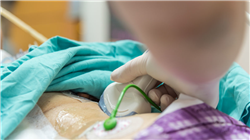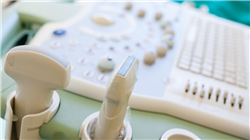University certificate
Scientific endorser

The world's largest faculty of nursing”
Introduction to the Program
A comprehensive and 100% online program, exclusive to TECH, with an international perspective backed by our membership in the National League for Nursing"

The use of Clinical Ultrasound for Nursing not only allows for quicker and more effective assessments in critical situations but also facilitates informed decision-making, which is essential in high-pressure environments. In an increasingly demanding healthcare setting, the ability to use ultrasound not only optimizes practice but also empowers nurses to take an active role in the comprehensive care of patients.
In this context, TECH presents the Advanced master’s degree in Clinical Ultrasound for Nursing, which will provide the necessary skills to integrate this technology into daily practice.
Through a rigorous approach and an up-to-date syllabus topics such as abdominal ultrasound, cardiac assessment, and ultrasound in emergencies will be addressed, providing in-depth knowledge of the various clinical applications of this technique. Additionally, the program will delve into abdominal, cardiac, and pulmonary ultrasound. In this way, the postgraduate course will not only prepare graduates to master Clinical Ultrasound, but it will also open new doors in their professional careers.
Furthermore, this university qualification will be taught entirely online, allowing students to adapt their training to their schedules and daily responsibilities. The Relearning methodology implemented will facilitate the assimilation of key concepts through the strategic repetition of content, ensuring that each student can effectively consolidate their knowledge. In this way, students will have access to all materials 24/7 from any device with an internet connection.
As a member of the National League for Nursing (NLN), TECH offers students access to assessment tools, digital libraries, webinars, and conferences focused on nursing educational excellence. This membership promotes faculty development, engagement with leading experts in the field, and the opportunity to join high-impact academic and clinical networks.
Thanks to the Relearning methodology, you will effectively and permanently absorb the concepts of Clinical Ultrasound. What are you waiting for to enroll?" Enroll now and be part of the new era in Nursing”
This Advanced master’s degree in Clinical Ultrasound for Nursing contains the most complete and up to date university program on the market. Its most notable features are:
- The development of practical cases presented by experts in Nursing
- The graphic, schematic, and practical contents with which they are created, provide scientific and practical information on the disciplines that are essential for professional practice
- Practical exercises where self-assessment can be used to improve learning
- Special emphasis on innovative methodologies in Clinical Ultrasound for Nursing
- Theoretical lessons, questions to the expert, debate forums on controversial topics, and individual reflection assignments
- Content that is accessible from any fixed or portable device with an internet connection
This postgraduate program will offer you a comprehensive syllabus covering the physical principles of ultrasound and its application in emergencies and critical care. Join this program now and boost your career!”
The teaching staff includes nursing professionals who bring their experience to this training program, as well as renowned specialists from leading societies and prestigious universities.
The multimedia content, developed with the latest educational technology, will provide the professional with situated and contextual learning, i.e., a simulated environment that will provide an immersive learning experience designed to prepare for real-life situations.
This program is designed around Problem-Based Learning, whereby the student must try to solve the different professional practice situations that arise throughout the program. For this purpose, the professional will be assisted by an innovative interactive video system created by renowned and experienced experts.
You will train with instructors who have extensive experience in the field and acquire skills that will set you apart in the job market. Enroll today and become an expert in Clinical Ultrasound!"

Through thorough and efficient training, you will gain the necessary skills to perform ultrasounds with precision. What are you waiting for to take the next step toward a successful career?"
Why study at TECH?
TECH is the world’s largest online university. With an impressive catalog of more than 14,000 university programs available in 11 languages, it is positioned as a leader in employability, with a 99% job placement rate. In addition, it relies on an enormous faculty of more than 6,000 professors of the highest international renown.

Study at the world's largest online university and guarantee your professional success. The future starts at TECH”
The world’s best online university according to FORBES
The prestigious Forbes magazine, specialized in business and finance, has highlighted TECH as “the world's best online university” This is what they have recently stated in an article in their digital edition in which they echo the success story of this institution, “thanks to the academic offer it provides, the selection of its teaching staff, and an innovative learning method aimed at educating the professionals of the future”
A revolutionary study method, a cutting-edge faculty and a practical focus: the key to TECH's success.
The most complete study plans on the university scene
TECH offers the most complete study plans on the university scene, with syllabuses that cover fundamental concepts and, at the same time, the main scientific advances in their specific scientific areas. In addition, these programs are continuously being updated to guarantee students the academic vanguard and the most in-demand professional skills. In this way, the university's qualifications provide its graduates with a significant advantage to propel their careers to success.
TECH offers the most comprehensive and intensive study plans on the current university scene.
A world-class teaching staff
TECH's teaching staff is made up of more than 6,000 professors with the highest international recognition. Professors, researchers and top executives of multinational companies, including Isaiah Covington, performance coach of the Boston Celtics; Magda Romanska, principal investigator at Harvard MetaLAB; Ignacio Wistumba, chairman of the department of translational molecular pathology at MD Anderson Cancer Center; and D.W. Pine, creative director of TIME magazine, among others.
Internationally renowned experts, specialized in different branches of Health, Technology, Communication and Business, form part of the TECH faculty.
A unique learning method
TECH is the first university to use Relearning in all its programs. It is the best online learning methodology, accredited with international teaching quality certifications, provided by prestigious educational agencies. In addition, this disruptive educational model is complemented with the “Case Method”, thereby setting up a unique online teaching strategy. Innovative teaching resources are also implemented, including detailed videos, infographics and interactive summaries.
TECH combines Relearning and the Case Method in all its university programs to guarantee excellent theoretical and practical learning, studying whenever and wherever you want.
The world's largest online university
TECH is the world’s largest online university. We are the largest educational institution, with the best and widest online educational catalog, one hundred percent online and covering the vast majority of areas of knowledge. We offer a large selection of our own degrees and accredited online undergraduate and postgraduate degrees. In total, more than 14,000 university degrees, in eleven different languages, make us the largest educational largest in the world.
TECH has the world's most extensive catalog of academic and official programs, available in more than 11 languages.
Google Premier Partner
The American technology giant has awarded TECH the Google Google Premier Partner badge. This award, which is only available to 3% of the world's companies, highlights the efficient, flexible and tailored experience that this university provides to students. The recognition as a Google Premier Partner not only accredits the maximum rigor, performance and investment in TECH's digital infrastructures, but also places this university as one of the world's leading technology companies.
Google has positioned TECH in the top 3% of the world's most important technology companies by awarding it its Google Premier Partner badge.
The official online university of the NBA
TECH is the official online university of the NBA. Thanks to our agreement with the biggest league in basketball, we offer our students exclusive university programs, as well as a wide variety of educational resources focused on the business of the league and other areas of the sports industry. Each program is made up of a uniquely designed syllabus and features exceptional guest hosts: professionals with a distinguished sports background who will offer their expertise on the most relevant topics.
TECH has been selected by the NBA, the world's top basketball league, as its official online university.
The top-rated university by its students
Students have positioned TECH as the world's top-rated university on the main review websites, with a highest rating of 4.9 out of 5, obtained from more than 1,000 reviews. These results consolidate TECH as the benchmark university institution at an international level, reflecting the excellence and positive impact of its educational model.” reflecting the excellence and positive impact of its educational model.”
TECH is the world’s top-rated university by its students.
Leaders in employability
TECH has managed to become the leading university in employability. 99% of its students obtain jobs in the academic field they have studied, within one year of completing any of the university's programs. A similar number achieve immediate career enhancement. All this thanks to a study methodology that bases its effectiveness on the acquisition of practical skills, which are absolutely necessary for professional development.
99% of TECH graduates find a job within a year of completing their studies.
Advanced Master's Degree in Clinical Ultrasound for Nursing
Thanks to the sound waves generated by the ultrasound machine, it is possible to visualize the organs, tissues, and internal structures of the patient. This procedure is one of the most commonly used in clinical settings, as it allows for quick and non-invasive anatomical diagnosis. In nursing practice, it is essential for each professional to stay updated on the latest developments in the field in order to incorporate the most current techniques into their daily practice. The Advanced Master’s Degree in Clinical Ultrasound for Nursing offered by TECH Global University is a program developed specifically to refine your skills in this area. The program is fully online and features innovative educational resources that will enhance your learning experience. The syllabus will allow you to explore topics such as the physical principles of ultrasound and its functionality, followed by basic and advanced procedures in diagnostic and therapeutic ultrasonography. Additionally, you will study ultrasound modalities and types of clinical ultrasound, including head, neck, thoracic, genitourinary, musculoskeletal, vascular, and digestive systems. As a result, you will become proficient in performing ultrasound-guided procedures in both hospital and outpatient settings, ensuring greater safety and efficiency.
Become an expert in clinical ultrasound
The use of ultrasound is widespread, both in primary care and in emergency situations that require critical care. That is why this postgraduate program from TECH offers everything you need to specialize in this field. The syllabus includes theoretical and practical lessons, continuous expert support, and entirely innovative academic materials. Additionally, you will have the opportunity to access state-of-the-art equipment and work with real-life cases in professional practice. Over the course of two years, you will learn about the indications and limitations of ultrasonography and its application in the most common clinical situations. You will also explore spatial orientation or “eco-navigation,” its use in trauma cases, and the performance of ultrasound-guided drainage or catheterization. Thanks to this, you will be able to integrate the latest advancements in the field into your daily practice, improving the quality of care for your patients.







